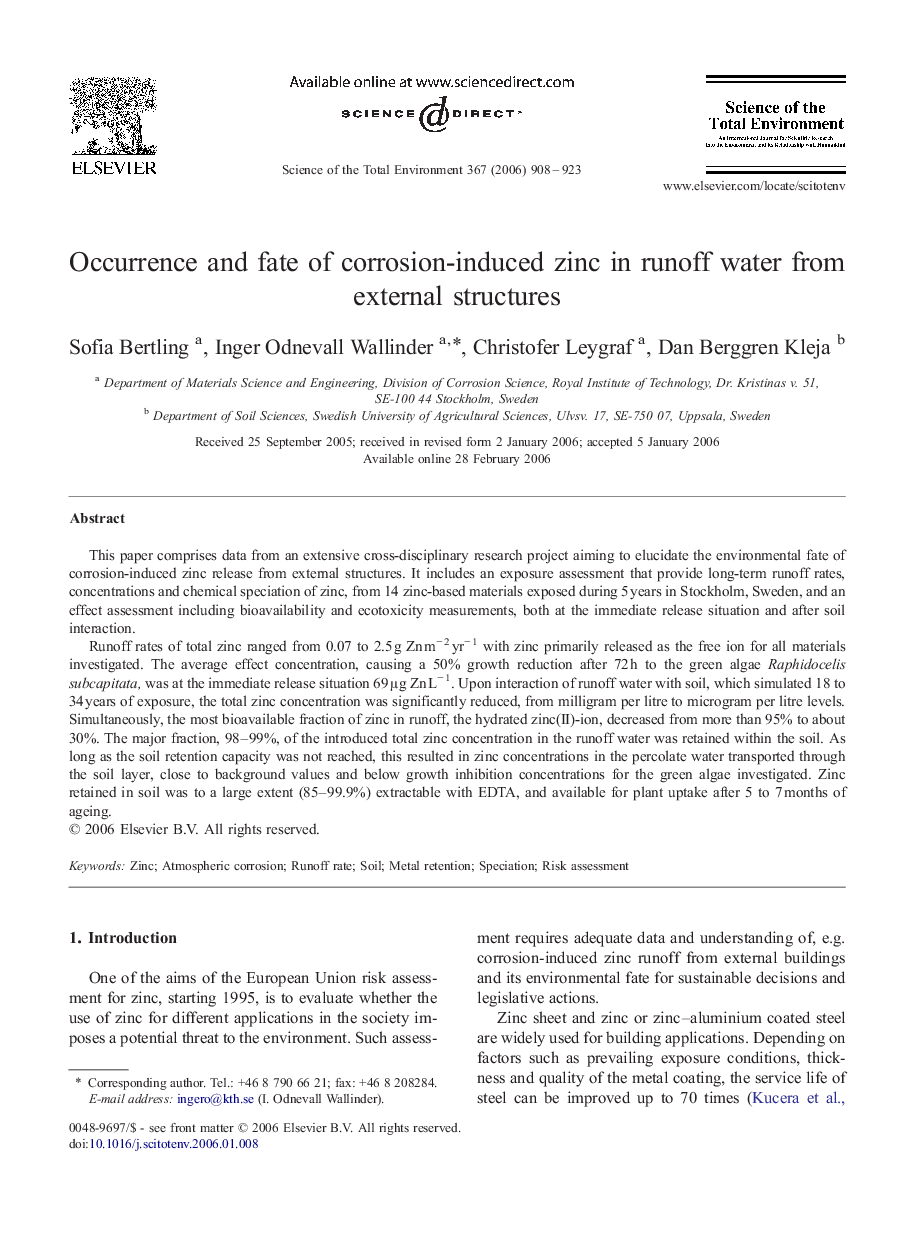| Article ID | Journal | Published Year | Pages | File Type |
|---|---|---|---|---|
| 4433840 | Science of The Total Environment | 2006 | 16 Pages |
This paper comprises data from an extensive cross-disciplinary research project aiming to elucidate the environmental fate of corrosion-induced zinc release from external structures. It includes an exposure assessment that provide long-term runoff rates, concentrations and chemical speciation of zinc, from 14 zinc-based materials exposed during 5 years in Stockholm, Sweden, and an effect assessment including bioavailability and ecotoxicity measurements, both at the immediate release situation and after soil interaction.Runoff rates of total zinc ranged from 0.07 to 2.5 g Zn m− 2 yr− 1 with zinc primarily released as the free ion for all materials investigated. The average effect concentration, causing a 50% growth reduction after 72 h to the green algae Raphidocelis subcapitata, was at the immediate release situation 69 μg Zn L− 1. Upon interaction of runoff water with soil, which simulated 18 to 34 years of exposure, the total zinc concentration was significantly reduced, from milligram per litre to microgram per litre levels. Simultaneously, the most bioavailable fraction of zinc in runoff, the hydrated zinc(II)-ion, decreased from more than 95% to about 30%. The major fraction, 98–99%, of the introduced total zinc concentration in the runoff water was retained within the soil. As long as the soil retention capacity was not reached, this resulted in zinc concentrations in the percolate water transported through the soil layer, close to background values and below growth inhibition concentrations for the green algae investigated. Zinc retained in soil was to a large extent (85–99.9%) extractable with EDTA, and available for plant uptake after 5 to 7 months of ageing.
